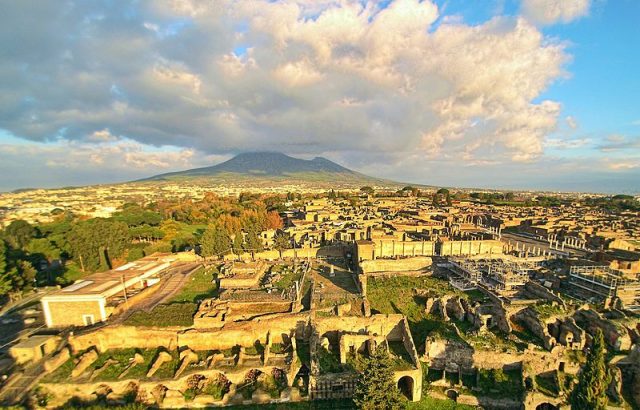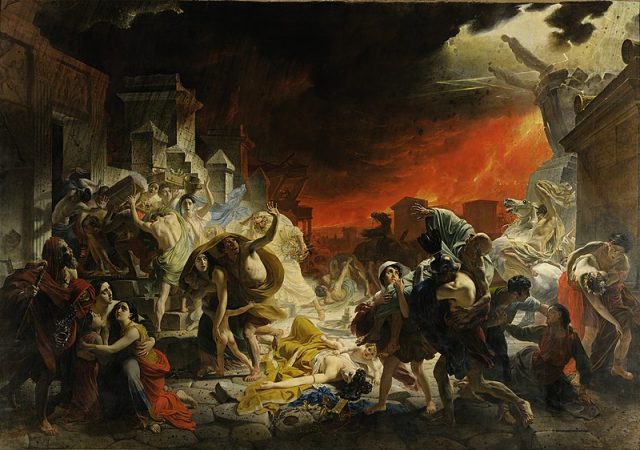Beads, amulets, skulls, and other treasure of a sorcerer have been found in Pompeii. Every once in a while, circumstances occur in which some ancient historical site is left in much better shape than you would expect. Such sites are highly prized by archaeologists, since they can give a much better insight into the distant history of the place and time they represent.
One of those places is the city of Pompeii, which was buried during an eruption of Mount Vesuvius in the first century, AD. The city didn’t meet its end because of lava, instead, it became buried in a cloud of volcanic ash and particles. It happened so fast that the city was essentially frozen in time, its inhabitants all caught going about the business of their daily lives. As a result, the city represents a gold mine of archaeological material.

The most recent find, according to the BBC and the Italian news source ANSA, was a literal treasure chest, which a source from the site called ‘a sorcerer treasure trove’ in Pompeii. It was the remains of what had been a wooden box bull of what appeared to be a sizable collection of good luck charms. The wood had long since decomposed, but the brass hinges, which had been preserved by the volcanic matter that covered them, remained.
Pompeii archaeologists uncover ‘sorcerer’s treasure trove’ https://t.co/WwAeExV5u5
— BBC News (World) (@BBCWorld) August 12, 2019
The contents of the box were an assortment of charms, including scarabs from the Middle East, crystals, and beads. There were bits of amber and amethyst, and several small figures carved from various minerals, including carnelian. Other items included several rings, dolls, bells, phallic symbols, and things which look to be carved bits of bone. There was even a tiny skull.
Massimo Osanna, the director of the Archaeological Park in Pompeii, said that the items probably belonged to some sort of lowly female sorceress. He also noted that the owner or owners of the collection might have been slaves or servants of the house it was found in, since none of the many items were made of gold, which was a highly prized treasure not only for a sorcerer, but among the wealthy of Pompeii.
Archaeologists in #Pompeii find amulets and charms that may have been used by Roman sorcerer https://t.co/YEIU2pIDsQ via @telegraphnews
— Nick Squires (@NickSquires1) August 12, 2019
All of the objects seem to have been either for attracting good luck, or for averting and protecting against bad, and Osanna said they believe the charms belonged to a woman or women. He further suggested that they could have been from necklaces that were worn for ritual purposes, rather than sheerly for style and experts speculated they could have been geared toward rituals of seduction and fertility, as well as offering blessings and protection for pregnancy and childbirth.
The significance of the find lies in the fact that the box’s contents offer a snapshot of a (most likely) female sorcerer’s life in the city, telling tiny stories about the values, activities, and priorities of its inhabitants.
The find was uncovered at Casa del Giardino (House of the Garden), in the same part of the park where archaeologists also recently discovered evidence that the eruption of Vesuvius may have actually happened a couple of months later than historians had previously believed. In another room of the same house, they also discovered a room with 10 victims of the eruption, a number of whom were women and children.

Scientists are using DNA testing to see if they can establish ties of kinship among any of the bodies they unearthed, and are speculating about whether the collection they found may have belonged to one of those victims and had been abandoned as the family tried to flee the devastation bearing down on them from the volcano.
Mt. Vesuvius is considered one of the most dangerous volcanoes in the world, both because it’s located near Naples, making it an area with a high population, and because it often has explosive eruptions, as well as lava flows. The explosive eruptions contain a mixture of superheated gas and volcanic ash which can happen very rapidly – much more so than slow-flowing lava. It was an event of this type that destroyed Pompeii, burying its residents where they stood, with no way to outrun it.
Related Article: On Display: Stunning Viking Bead Necklace Belonging to a Pagan Sorceress
That same devastation, however, is also the reason the city has been so well-preserved and, as a result, such a rich ground for archaeological exploration into Roman life at the time.
